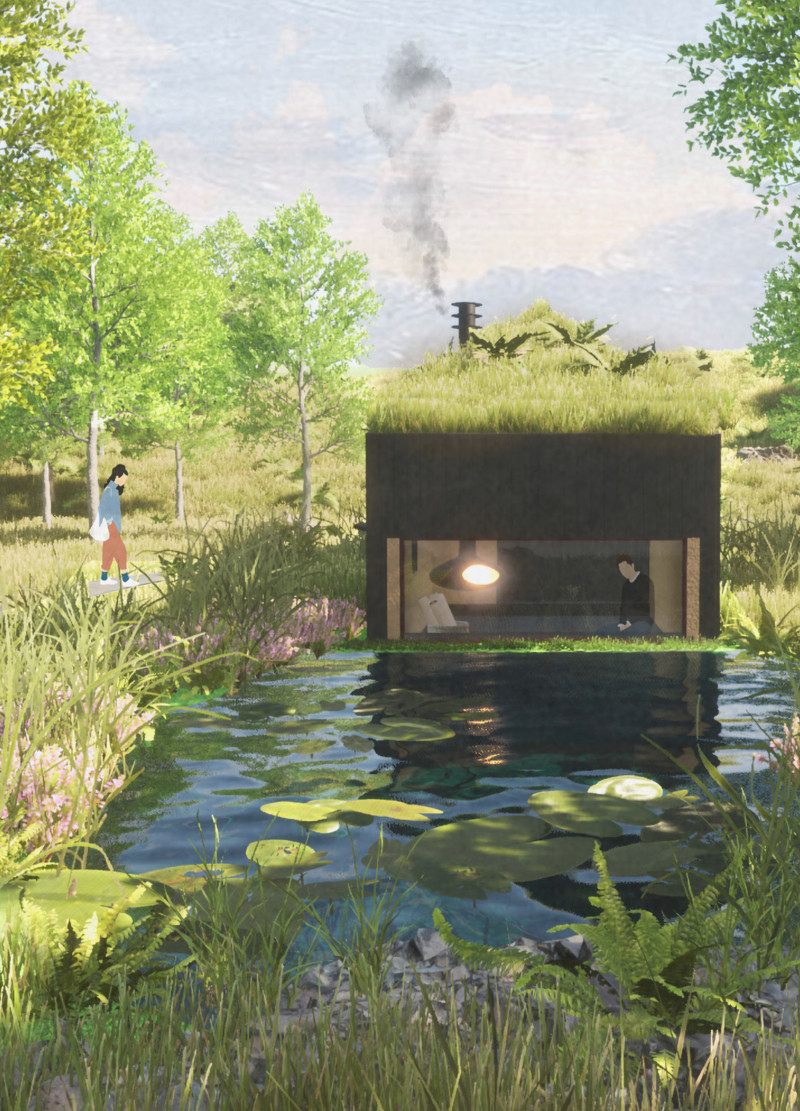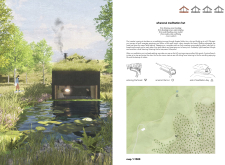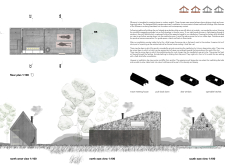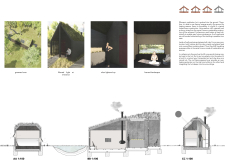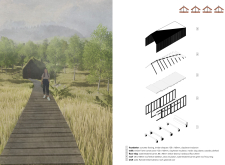5 key facts about this project
The hut's primary function is to facilitate meditation and personal introspection. It is characterized by a simplistic yet effective design that invites its users to connect with their surroundings. The project incorporates locally sourced materials, ensuring that its construction aligns with ecological sustainability while also resonating with the indigenous cultural context.
Unique Cultural and Environmental Integration
The Wharenui Meditation Hut stands out due to its direct references to Maori architecture, translating the concept of the traditional meeting house into a contemporary meditation space. This is evident in the overall form of the hut, which reflects traditional shapes and spatial arrangements, offering a culturally rich experience. The large windows and open hatches have been purposefully positioned to maximize natural light and views of the surrounding landscape, enhancing the interaction between the interior and exterior spaces.
Incorporating sustainable materials is critical to the design. The use of timber for structural components guarantees durability and reflects a commitment to environmental responsibility. Additionally, clay/straw insulation within the walls contributes to the building's thermal performance, while flamed timber battens create a rustic aesthetic that harmonizes with the natural setting. The integration of a natural pond and surrounding vegetation enhances biodiversity, further solidifying the building’s connection to its environment.
Functional Design Considerations
The spatial configuration within the Wharenui Meditation Hut is both intentional and functional. The layout consists of designated areas that encourage meditation and contemplation, with an altar window designed to hold spiritual significance. This window allows for contemplative insight through framed views of nature, reinforcing the building’s purpose as a meditation space.
Furthermore, the design embraces biophilic principles, with elements such as a green roof that blends seamlessly into the landscape. Such decisions foster a sense of peace and mindfulness that is essential for the hut's intended use. The overall design emphasizes accessibility, ensuring that the space caters to diverse user needs while remaining aligned with its meditative goals.
The Wharenui Meditation Hut exemplifies a thoughtful approach to architecture, emphasizing cultural significance and environmental integration. For an in-depth exploration of this project, including architectural plans, sections, and design elements, readers are encouraged to review the project presentation for further insights into its innovative architectural ideas.


